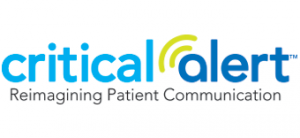Interruption Rates
Clinical interruptions are rampant in every hospital. Alarms from medical devices, alerts from nurse call, questions from colleagues, overhead paging, etc. are all culprits. Interruptions in any situation are a distraction, but in a patient care environment it can be catastrophic.
Clinical interruptions can result in medical errors because they distract caregivers from the task at hand especially in the case of something like preparing medications for patients.
Increased risk of error
12.7% increased risk of a medication error and that the error rate tripled when a nurse was interrupted 6 times. – Westbrook JI, Woods A, Rob MI, Dunsmuir WTM, Day RO. Association of interruptions with and increased risk and severity of medication administration errors. Arch Intern Med. 2010;170:683-690 Read The Study
Our Approach To Decreasing Clinical Interruptions
Our goal is to transform clinical disruptions caused by alarms, alerts, and notifications to meaningful interruptions – only sending those that matter and cause action. By streamlining technology, many causes of clinical interruptions can be reduced through more intelligent processing of patient alarms, smarter routing of mobile notifications and access to detailed analytics of the entire clinical workflow.
Integrating Nurse Call Systems with other hospital investments, such as wireless communication devices, ADT and real time locating systems (RTLS) results in more efficient workflows, faster response times, more informed response to patient requests and less clinical interruptions.
Fall Prevention
Falls are a widespread and devastating source of patient harm in healthcare settings. It has been estimated that 700,000 to 1 million hospitalized patients fall each year. That is an astounding number that can be significantly reduced by predetermining fall risk.
Critical Alert offers a comprehensive solution set for mitigating fall risk featuring integrations with ADT and bed vendors, inclusion of risk status in mobile notifications, risk indication in mobile rounding tools, and displays of risk indication on dome lights and consoles.
With the Stryker iBed Awareness integration, each bed can be configured to notify appropriate staff if bed rails are dropped or patient position changes allowing the caregiver to call into the room to assure the patient that someone is coming to attend to their needs. These real-time patient bed status and alerts allow clinicians to be proactive and immediately intervene to prevent patient falls.
Understanding Alarm Fatigue
Despite the Joint Commission’s National Patient Safety Goal 06.01.01 requiring hospitals to establish alarms as a priority and then to develop and implement alarm management policies and procedures, alarm fatigue continues to plague healthcare facilities. Patients’ lives depend on intelligent alarm and alert management. Critical Alert can provide the tools and best practices to mitigate alarms and alerts resulting in enhanced patient safety and staff efficiency.
Nurse calls don’t require an RN
One nursing study found that 48% of calls are for position change followed by toileting assistance (11%), and accidental calls (5%) – Studer Q. Response to call lights. 2008. Available at: http://www.studergroup.com/dotCMS/knowledgeAssetDetail?inode=109186. Accessed January 18, 2008. Read The Study
not clinically relevant
92% of Physiological Alarms Are Not Clinically Relevant – False Alarm Reduction in Critical Care Read The Study
Our Approach To Lessening The Impact of Alarms
By utilizing customized clinical workflows to route alarms and alerts intelligently, Critical Alert only sends appropriate and actionable notifications to the right caregiver at the right time.
To ensure expedient and efficient patient care, our platform allows for automated escalation based on programed workflows and manual escalation that allows a caregiver to collaborate with the patients care team and send the notification to one of their care team members if they are busy with a patient.
There are myriad alarms and alerts that will self-correct within seconds. Critical Alert can hold alarms to enable them to reset as artifact utilizing customizable rules-based algorithms preventing nuisance notifications.
Alarm Fatigue can also be addressed through Critical Alert’s detailed workflow analytics by pinpointing inefficiencies and enabling administration to implement continual improvements throughout units and departments.

